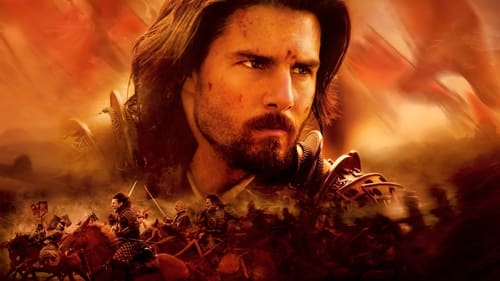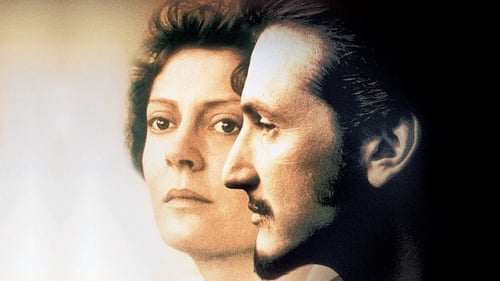AA-PROXIMA-SUN (2022)
What Is It That You Like?
Género : Fantasía, Drama
Tiempo de ejecución : 5M
Director : Fernando Sá Machado
Sinopsis
A girl approaches a divine entity that comes to the world in the form of a yellow umbrella, and ends up discovering her true self.

En torno a 1860, en vísperas de la Guerra de Secesión y a punto de terminar el periodo de colonización del Oeste (1785-1890), el teniente John J. Dunbar se dirige a un lejano puesto fronterizo que ha sido abandonado por los soldados. Su soledad lo impulsa a entrar en contacto con los indios sioux y, gracias a ello, conoce a 'En pie con el puño en alto', una mujer blanca que fue adoptada por la tribu cuando era niña. Poco a poco, entre Dunbar y los sioux se establece una relación de respeto y admiración mutuos.

En la imponente Nueva York, Jack (Jeff Bridges), un locutor de radio caído en desgracia, y Parry (Robin Williams), un enajenado profesor de historia, emprenden la búsqueda del Santo Grial.

1870. El capitán Nathan Algren es un hombre a la deriva. Las batallas que libró en otro tiempo parecen ahora lejanas e inútiles. Una vez arriesgó su vida por el honor y por la patria, pero, en los años transcurridos desde la Guerra de Secesión estadounidense, el mundo ha cambiado. El pragmatismo ha reemplazado al valor, el interés personal ha ocupado el lugar del sacrificio y el honor no se encuentra en ninguna parte, especialmente en el Oeste, donde su papel en las campañas contra los indios acabó en desilusión y tristeza. En algún lugar de las implacables llanuras junto a la ribera del río Washita, Algren perdió su alma. En un mundo completamente distinto, otro soldado ve como su modo de vida está a punto de desintegrarse.

Matthew Poncelet, un joven condenado a la pena capital por el asesinato de dos adolescentes, reclama desde la prisión la ayuda de la hermana Helen. Durante la semana previa a la fecha fijada para la ejecución, la hermana intentará que su condenado consiga la absolución y la paz espiritual. Sin embargo, en esta nueva ocupación, la hermana Helen sentirá una profunda inquietud no sólo por la espantosa agonía que supone la cuenta atrás, sino también por las familias de las víctimas.

Starting in the late 1930s, illustrator and experimental animator Douglass Crockwell created a series of short abstract animated films at his home in Glen Falls, New York. The films offered Crockwell a chance to experiment with various unorthodox animation techniques such as adding and removing non-drying paint on glass frame-by-frame, squeezing paint between two sheets of glass, and finger painting. The individual films created over a nine-year period were then stitched together for presentation, forming a nonsensical relationship that only highlights the abstract qualities of the images. —Kansas City Electronic Music and Arts Alliance

"Single Frame sequences of TV or film images, with periodic distortions of the image. The images are airplanes, women men interspersed with pictures of texts like: 'silence, genius at work' and 'ich liebe dich.' The end credit is 'Television décollage, Cologne, 1963."

In an endless loop, unexposed film runs through the projector. The resulting projected image shows a surface illuminated by a bright light, occasionally altered by the appearance of scratches and dust particles in the surface of the damaged film material. This a film which depicts only its own material qualities; An "anti-film", meant to encourage viewers to focus on the lack of concrete images.

In a lifeless urban landscape where time itself has stopped its crawl, a mad ballet is commencing and a newly hatched butterfly is about to die.

Everyday Is Like Sunday is a comedy/drama aiming the lens at post-collegiate characters stuck between their imminently-ending youth and impending adulthood. The film follows Mark, Jason, and Flora, as they realistically attempt to pull themselves out of economic and emotional doldrums.

In 1944 Lye moved to New York City, initially to direct for the documentary newsreel The March of Time. He settled in the West Village, where he mixed with artists who later became the Abstract Expressionists, encouraged New York’s emerging filmmakers such as Francis Lee, taught with Hans Richter, and assisted Ian Hugo on Bells of Atlantis. Color Cry was based on a development of the “rayogram” or “shadow cast” process, using fabrics as stencils, with the images synchronized to a haunting blues song by Sonny Terry, which Lye imagined to be the anguished cry of a runaway slave. —Harvard Film Archive

Short experimental animation.

A synthesized video environment.

Ike Graham, redactor de un periódico de Nueva York, abrumado por diversos problemas, decide aislarse en su refugio favorito a fin de encontrar ideas para escribir. Allí se entera del caso de Maggie, una joven que vive en una zona rural del estado de Maryland, a la que le encantan los compromisos matrimoniales, pero le horroriza el matrimonio. Intrigado, Ike escribe una columna sobre el caso de la joven, sin prever el enfado de Maggie y la cadena de enredos que acabará desatando.

Khumba es una cebra con solo la mitad de su cuerpo a rayas a la que todos culpan por la falta de lluvias. Debido a la gran presión de la manada Khumba decide embarcarse en una audaz misión para conseguir todas las rayas que le faltan. En su búsqueda del legendario pozo de agua del que todas las cebras obtuvieron sus preciadas líneas, la cebra conoce a una serie de personajes muy extravagantes: un ñu sobreprotector, Mamá V y Bradley, un obsesionado avestruz. Pero antes de que pueda reunirse de nuevo con su manada, Khumba tendrá que enfrentarse cara a cara con el malvado Phango, un leopardo sádico que controla todos los pozos de agua de la zona y aterroriza a todos los animales en el Gran Karoo. A lo largo del viaje y de las nuevas experiencias, Khumba comienza a aprender que la diversidad es esencial para la supervivencia y que la diferencia hace que uno pueda ser la fuerza de toda la manada.

After a fight with his wife, who's leaving him, Dan's day is getting worse by the minute. He calls an old friend for a night of binge drinking and intoxication. They start a cathartic ride through the city's underbelly.

An essay around the streets, as an homage to Fernando Pessoa

Everyday Is Like Sunday is a comedy/drama aiming the lens at post-collegiate characters stuck between their imminently-ending youth and impending adulthood. The film follows Mark, Jason, and Flora, as they realistically attempt to pull themselves out of economic and emotional doldrums.

Starting in the late 1930s, illustrator and experimental animator Douglass Crockwell created a series of short abstract animated films at his home in Glen Falls, New York. The films offered Crockwell a chance to experiment with various unorthodox animation techniques such as adding and removing non-drying paint on glass frame-by-frame, squeezing paint between two sheets of glass, and finger painting. The individual films created over a nine-year period were then stitched together for presentation, forming a nonsensical relationship that only highlights the abstract qualities of the images. —Kansas City Electronic Music and Arts Alliance

In 1944 Lye moved to New York City, initially to direct for the documentary newsreel The March of Time. He settled in the West Village, where he mixed with artists who later became the Abstract Expressionists, encouraged New York’s emerging filmmakers such as Francis Lee, taught with Hans Richter, and assisted Ian Hugo on Bells of Atlantis. Color Cry was based on a development of the “rayogram” or “shadow cast” process, using fabrics as stencils, with the images synchronized to a haunting blues song by Sonny Terry, which Lye imagined to be the anguished cry of a runaway slave. —Harvard Film Archive

ĀTMAN is a visual tour-de-force based on the idea of the subject at the centre of the circle created by camera positions (480 such positions). Shooting frame-by-frame the filmmaker set up an increasingly rapid circular motion. ĀTMAN is an early Buddhist deity often connected with destruction; the Japanese aspect is stressed by the devil mask of Hangan, from the Noh, and by using both Noh music and the general principle of acceleration often associated with Noh drama.










